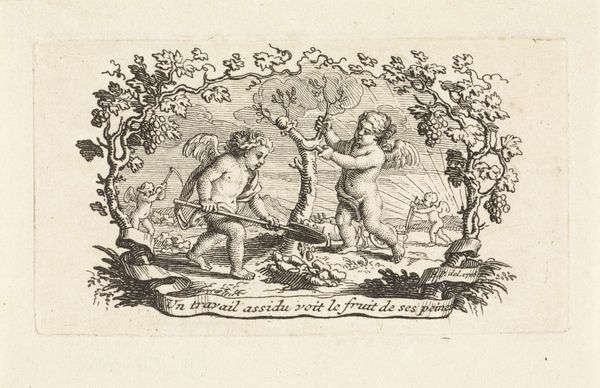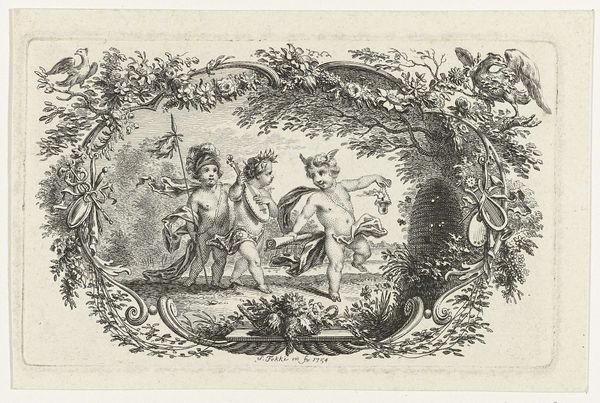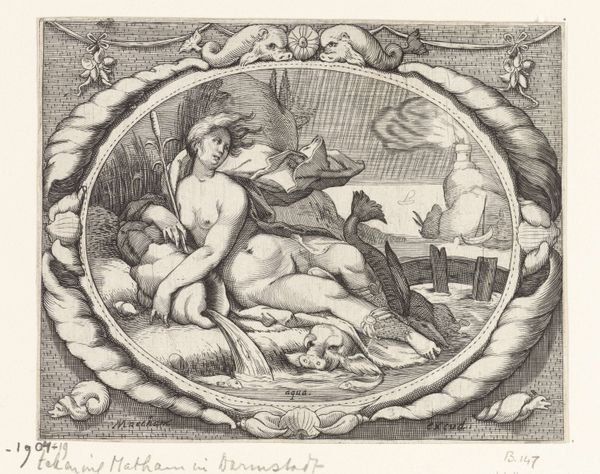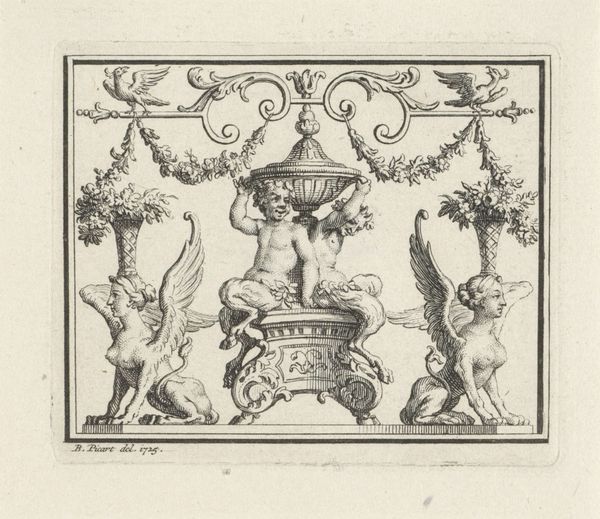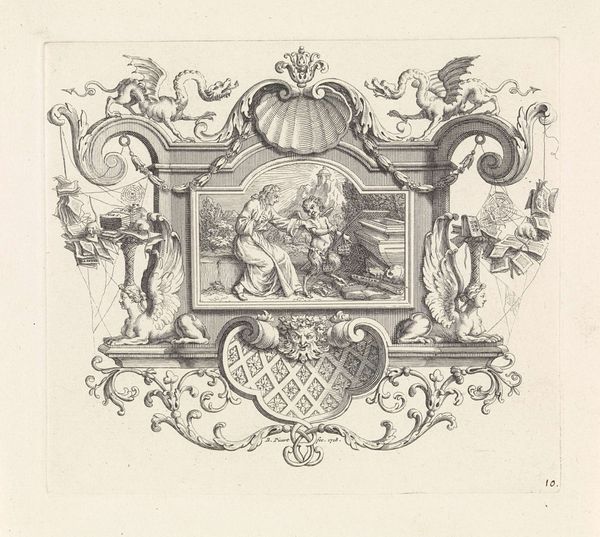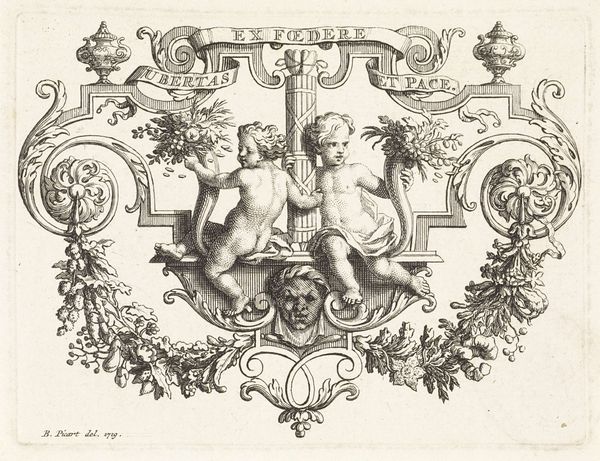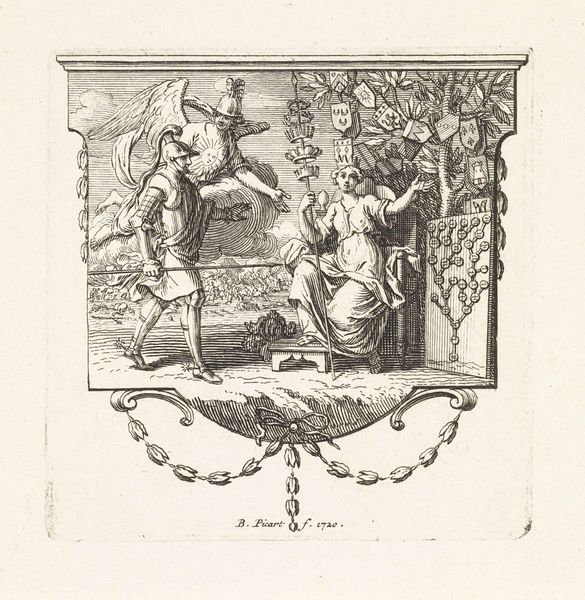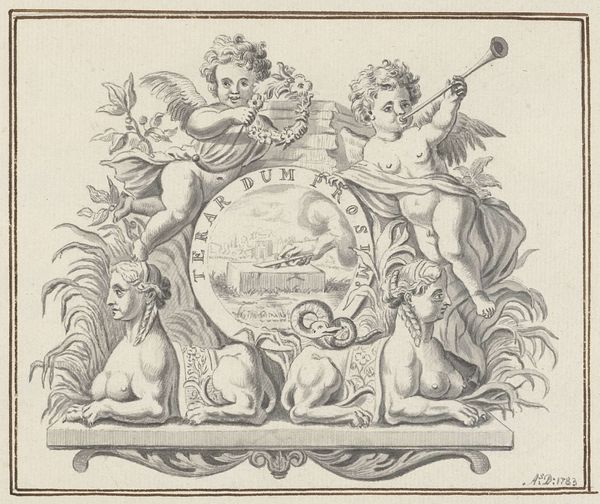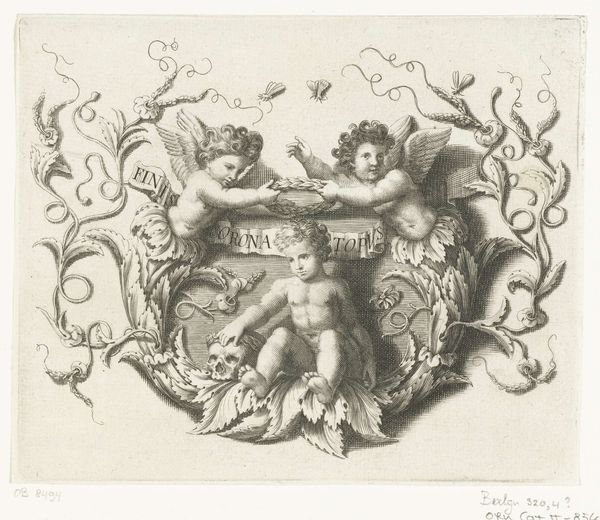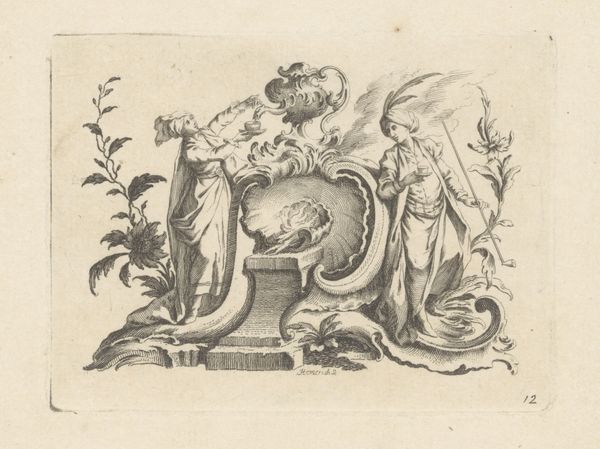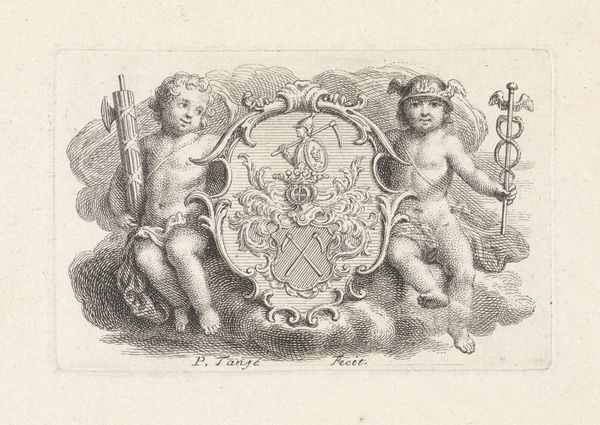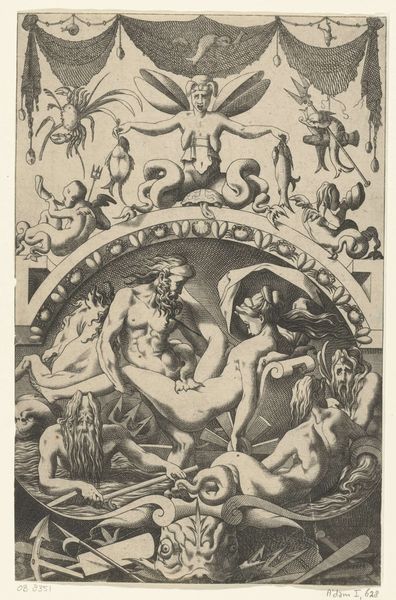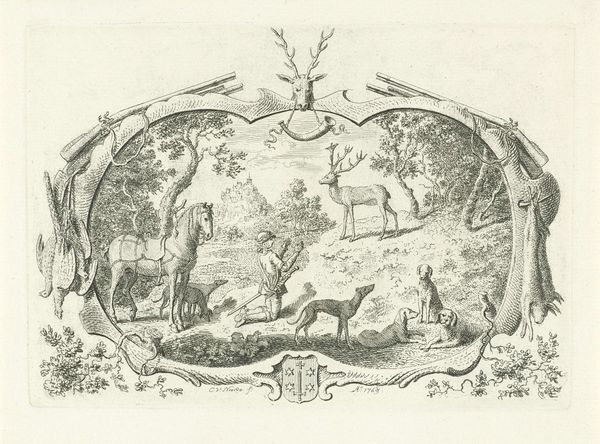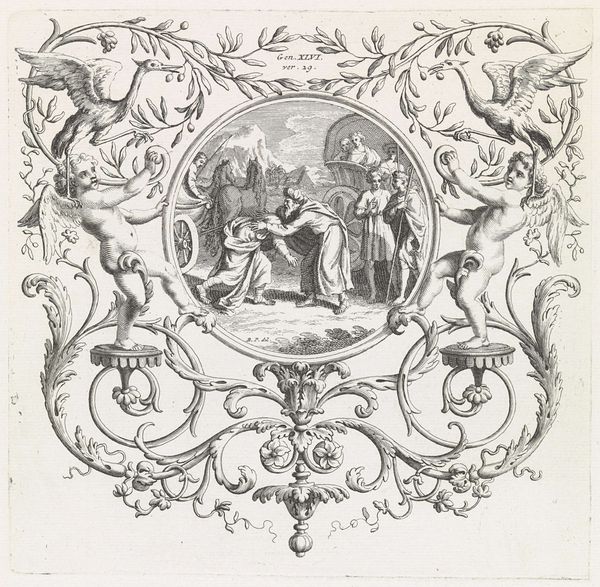
print, engraving
#
allegory
#
baroque
# print
#
old engraving style
#
figuration
#
history-painting
#
engraving
Dimensions: height 86 mm, width 115 mm
Copyright: Rijks Museum: Open Domain
Editor: So, this engraving, "Twee putti bij een wapenschild" by Jan Punt, dating somewhere between 1731 and 1779... it feels very ornate, very much of its time, with those chubby cherubs holding up a coat of arms. What stands out to you when you look at this, from a critical perspective? Curator: Well, consider the period – the Baroque era. Everything, even something like a family crest, becomes a stage for power and privilege. Who *gets* their lineage memorialized like this? And why depict them with putti? What purpose do they serve? Editor: The putti do seem a bit random, although they look decorative. One’s holding what appears to be Hermes' staff? Curator: Precisely! Hermes, messenger of the gods, associated with commerce and boundaries. Now, why would a family commissioning this print choose to align themselves with these symbols? Think about what it signifies to link themselves to not only ancient nobility but a divine messenger with complex commercial and maybe even trickster connotations. What message are they *really* trying to convey? Editor: It's a strange mix – both very proper and kind of...subversive? It hints at the family’s aspiration to be viewed through a heroic or even mythical lens, which might obfuscate any potential flaws they want to erase from collective memory. Curator: Exactly. These images don't just depict; they perform. They actively construct and negotiate identity and power dynamics within a society rife with inequality. Understanding that performance allows us to unpack whose stories get told, and who is strategically erased. Editor: That’s a great point. I didn’t consider the act of historical editing within heraldry like that. Curator: It reveals the politics inherent in seemingly decorative forms, prompting us to ask who benefits from these visual statements and whose stories remain untold.
Comments
No comments
Be the first to comment and join the conversation on the ultimate creative platform.
